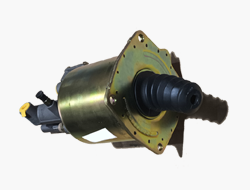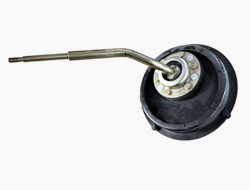A Comprehensive Guide to Truck Tires
Maximizing Performance and Safety: A Comprehensive Guide to Truck Tires

Introduction:
Truck tires are the unsung heroes of the road, bearing the weight of heavy loads and enduring thousands of miles of travel. Often overlooked, they play a crucial role in ensuring the safety, efficiency, and performance of commercial vehicles. From long-haul trucks to delivery vans, choosing the right tires and maintaining them properly can make a significant difference in both operational costs and road safety.
1. Understanding Truck Tire Basics:
Truck tires are engineered to withstand immense pressure and provide stability under various conditions. They come in different sizes, tread patterns, and compositions tailored to specific applications. The most common types include:
Highway Tires: Designed for long-distance driving on paved roads, offering durability and fuel efficiency.
All-Terrain Tires: Suitable for mixed driving conditions, including paved roads, gravel, and light off-road terrain.
Mud-Terrain Tires: Featuring aggressive tread patterns for enhanced traction in muddy and off-road environments.
Winter Tires: Equipped with special compounds and tread designs to improve grip and handling on snow and ice.
2. Factors to Consider When Choosing Truck Tires:
Load Capacity: Select tires with a load rating that matches or exceeds the vehicle's weight requirements to ensure safe operation.
Tread Design: Assess the typical driving conditions and choose a tread pattern optimized for traction, braking, and tread life.
Durability: Look for tires made from high-quality materials capable of withstanding heavy loads, punctures, and abrasion.
Fuel Efficiency: Opt for tires with low rolling resistance to improve fuel economy and reduce operational costs over the long term.
3. Proper Tire Maintenance:
Maintaining truck tires is essential for maximizing their lifespan and performance while ensuring safety on the road. Key maintenance practices include:
Regular Inspections: Check tire pressure, tread depth, and overall condition at least once a month or before long trips.
Proper Inflation: Maintain the recommended tire pressure to optimize fuel efficiency, tire wear, and vehicle handling.
Rotation: Rotate tires regularly to promote even tread wear and extend their lifespan.
Alignment and Balancing: Ensure proper wheel alignment and balance to prevent uneven wear and vibration issues.
Repairs and Replacements: Promptly address any damage, such as punctures or sidewall cracks, and replace tires as needed to maintain safety and performance.
4. Investing in Quality and Safety:
While it may be tempting to cut costs by opting for cheaper tires, investing in quality products from reputable brands can yield significant benefits in terms of performance, safety, and overall cost-effectiveness. Quality tires offer superior durability, traction, and fuel efficiency, reducing the risk of breakdowns, accidents, and costly repairs.
Conclusion:
Truck tires are a critical component of commercial vehicle operation, influencing everything from fuel efficiency to safety on the road. By understanding the basics of truck tires, carefully selecting the right ones for specific applications, and prioritizing proper maintenance, fleet operators can optimize performance, extend tire lifespan, and enhance overall safety for drivers and other road users. Investing in quality tires and proactive maintenance not only saves money in the long run but also contributes to a more efficient and sustainable transportation industry.
Related Products









